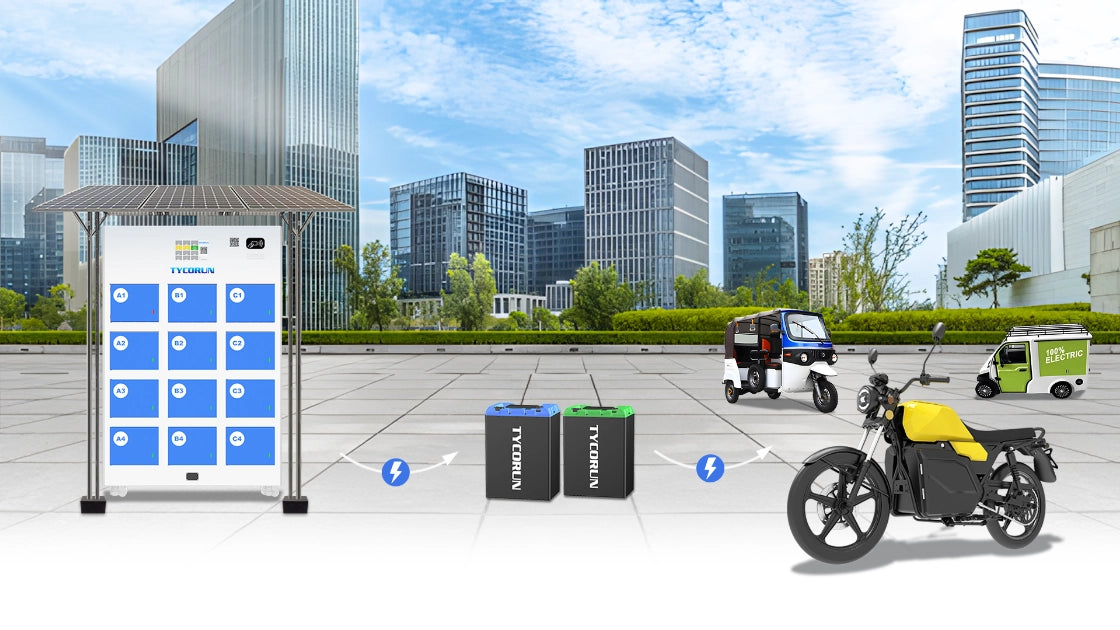
Main content:
Electric two-wheelers have grown very quickly. Many riders are now switching from lead-acid batteries to lithium batteries. While lithium batteries are lighter and more powerful, they can be less safe if not managed properly.
That's why an eBike BMS (Battery Management System) is very important especially BMS for lithium-ion batteries. It helps monitor the battery, protects it from damage, and makes it last longer. In this article, we’ll look at the most common types of eBike BMS, their pros and cons, when each type is usually used, how BMS work, safety, and BMS future technology.
What is an eBike BMS?
An ebike BMS is the electronic system that manages and protects the battery. It monitors each cell, balances charging, prevents overcharging, stops deep discharging, and safeguards against overheating. In simple words, the BMS is the “guardian” of the battery.

A typical eBike BMS includes:
- Battery cells – the energy storage unit.
- Analog front end (AFE) – the circuit that monitors voltage and current.
- Protection system – prevents failures by disconnecting the battery when needed.
- Main controller – communicates with the e-bike system and controls safety functions.
Without a reliable BMS, lithium batteries could overheat, swell, or even catch fire. That's why every modern e-bike needs a well-designed eBike BMS.
How BMS Technology Works
An eBike BMS monitors each cell’s voltage to keep them balanced during charging and discharging, preventing overcharging or deep draining that could harm the battery. It also tracks temperature with sensors, reducing charging speed or shutting the system down if it overheats.

Another key role of the eBike BMS is handling battery State of Charge (SOC) and State of Health (SOH) Calculations. SOC shows how much power is left, while SOH reflects the battery’s overall condition. This information is sent to the display so riders can see accurate range and battery health.
Main Types of eBike BMS Configurations
There are several ways to design an ebike BMS. The differences come from where the control switches (called CFET and DFET) are placed and how they are connected. Let's look at the most common designs.
1. High-Side Series Design
In this setup, both CFET and DFET are placed on the positive side of the battery and connected in a series line.
Pros:
- No need for isolated communication since everything refers to the same ground.
- Reduced risk of short-circuit surge.
- The control circuit is stable, as the negative side always stays at the same potential.
Cons:
- If NMOS is used, a booster circuit is needed, which increases cost.Using PMOS is simpler but more expensive.
This type of eBike BMS is secure but can be costly due to extra components.
2. High-Side Parallel Design
In this layout, the control switches are still on the positive side, but they are placed in parallel
Pros:
- The cost of the charging and discharging system is lower.
- Components can be chosen based on actual current needs, which saves money.
Cons:
- Misoperation risks are higher. For example, charging and discharging at the wrong ports can damage the cells.
- his design works in some cases but needs careful handling to avoid mistakes.

3. Low-Side Series Design
Here, both switches are placed on the negative side of the battery and connected in series.
Pros:
- This is currently the most popular eBike BMS design.
- It is simple, effective, and low cost.
- Easier to implement with existing systems.
Cons:
- Potential differences between the system negative and battery negative need careful handling.
- Communication issues may occur when the switches are off.
- Most e-bikes on the market today use this low-side series architecture because it balances cost and reliability.
4. Low-Side Parallel Design
In this setup, the switches are on the negative side but connected in parallel.
Pros:
- Reduces costs since charging and discharging circuits are separated.
- Flexible component selection for charging and discharging needs.
Cons:
- Can't prevent incorrect usage, such as charging through the wrong port.
- May cause serious cell damage if misused.
- This design is less common in modern e-bikes because of safety concerns.
How To Choose the Right eBike BMS
When picking the right eBike BMS, two main questions matter:

1. High side or low side?
- Low-side designs are cheaper and easier to build. They are widely used in two-wheelers today.
- High-side designs offer safer communication even after protection triggers, but they cost more.
Series or parallel?
- In series designs, charging and discharging share the same port. This saves space but requires more components, especially if charging and discharging currents are very different.
- In parallel designs, charging and discharging use separate ports, which gives flexibility but adds extra cost and complexity.
The best choice depends on the e-bike model, expected battery performance, and budget. For most commuter e-bikes, a low-side series eBike BMS is sufficient. For larger or high-performance bikes, a high-side design may be better.
Other eBike BMS Designs
Beyond the four main types, there are advanced designs used for special cases.
Cascade Design
- Used when the battery pack has many cells (more than 16 in a row).
- Needed for high-voltage e-bikes like electric motorcycles.
- Uses multiple chips working together.
This design allows bigger batteries with more power but increases cost and complexity.
Independent Design
- Works without a separate main controller (MCU).
- The AFE alone monitors and controls the battery.
- When protection is needed, the system automatically cuts off the circuit.
Pros: Saves cost since no MCU is needed.
Cons: Less flexibility compared to controlled systems.
This design works well for low-cost e-bikes where budget is more important than advanced features.
Why eBike BMS Matters?
The eBike BMS is more than just a safety device—it boosts battery life, ensures stable power, and keeps riders safe from risks like overheating or fire. Modern systems even offer smart app monitoring, and as e-bikes grow in popularity, advanced eBike BMS solutions will become even more important.
Safety Considerations and Best Practices
- Preventing Common eBike BMS Failures
To prevent problems, the eBike BMS must match the battery’s capacity and current. Always use certified products from trusted makers, protect them from water and heat, and do regular maintenance.
- Emergency Procedures and Safety Steps
Know how to disconnect the battery if needed and watch for warning signs of eBike BMS issues. Keep a technician’s contact handy and a fire extinguisher nearby during charging.
- Compliance and Standards
A safe eBike BMS should follow key rules like UL, IEC, CE, and UN standards. These ensure the system is safe to use, sell, and ship worldwide.
Future of eBike BMS
Future eBike BMS technology is set to advance. We can expect smarter monitoring powered by AI and IoT, wireless communication for seamless updates, and improved cell balancing methods to extend riding range. At the same time, BMS designs will likely become smaller, more efficient, and more affordable. These innovations will make e-bikes safer, longer-lasting, and more accessible for riders worldwide.
Conclusion
Choosing the right eBike BMS is key to getting the best performance and safety from your battery. While there are different designs — high-side, low-side, series, parallel, cascade, or independent — the decision depends on your e-bike's needs.
For most riders, a low-side series design is enough. But for high-power bikes or motorcycles, advanced architectures like cascade or high-side setups might be necessary.
In the end, the eBike BMS is what makes lithium batteries safe and practical for everyday use. As the technology continues to develop, riders can expect longer-lasting batteries, safer rides, and smarter energy management.
Related Post: Top 10 battery BMS IC companies in the world, Top 5 energy storage BMS companies, Energy management system















